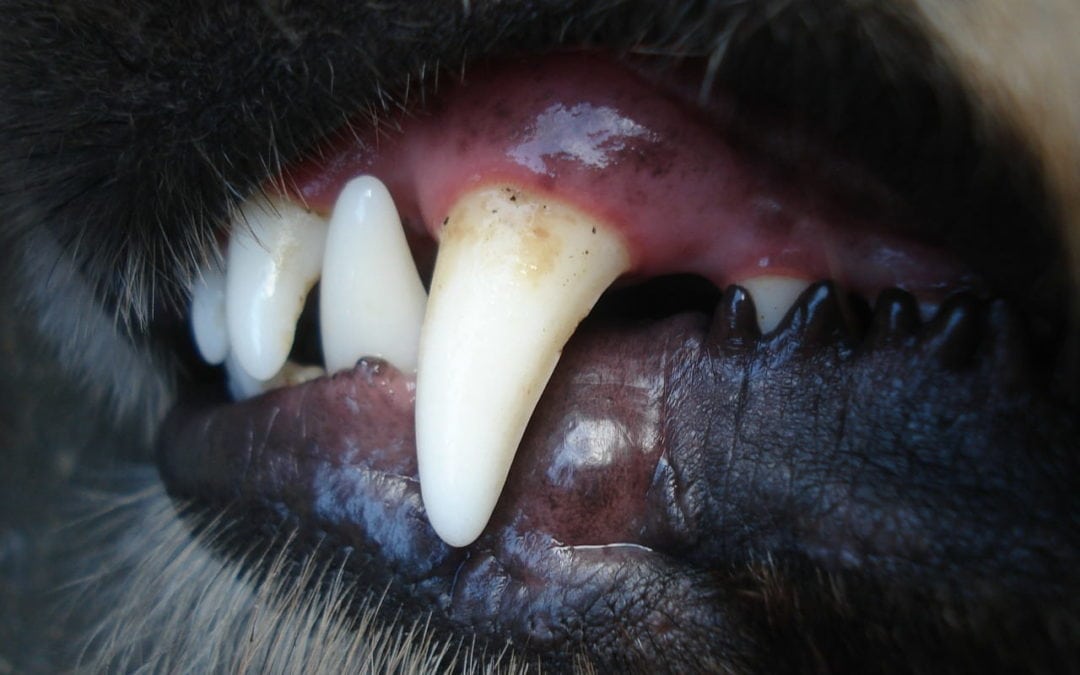February is dental health month. Many clinics will try to do a whole bunch of dental cleanings this month, but we (and more and more veterinarians) have moved well beyond that. Dentistry is a year-round problem.
Dental care is much more important than we thought thirty years ago when I was lucky enough to study with Dr. Peter Emily. Dr. Emily was one of the pioneers of veterinary dentistry. At a time, when dentistry was thought to be a special pet issue, he taught advanced classes. But even then, we knew that broken teeth caused pain. That is why I went to the extra classes to do root canals to save teeth and relieve pain. But the true understanding of periodontal disease and how it shortened life was not really understood.
Now it is understood that dental health is not only what is seen or smelled from the mouth. Periodontal disease allows bacteria to get into the bloodstream. Once there it moves to the heart and the kidneys and reduces the lifespan by 20 to 30%. That can mean multiple years off your pet’s life. I like my pets to live as long as possible.
A year and a half ago, I realized that my advanced dental course information had been surpassed by modern techniques. What had been way ahead of cutting-edge medicine was now back from the edge. I committed to doing a better job in dentistry. I signed up for a mastermind class on dentistry. In addition to the 66 hours of class work, there are quizzes, once a month seminar and consultation with the board-certified veterinary dentist that runs this. After class completion, there is a ten-day hands-on class for really advances techniques. Although I may not do that course, we are doing some pretty neat things.
Although we have had digital dental radiographs for a couple of decades, new software and intraoral plates allow us to see more. We have practiced, and views are more diagnostic than ever before. Stephanie and I both have taken classes on improving the Dental Service Protocol; Radiographic Interpretation and Surgical Extractions; Client Education; Treatment of Common Procedures and Charting Tips and Tricks; and multiple sessions on Veterinary Dental Radiographic Positioning & Technique. And that is just the first course of six with multiple modules in each of the others.
But the things that we can do now are exciting! Many are even less expensive than extractions or prior treatments. Regional Nerve Blocks allow pets to be under a lower level of anesthesia making it safer. Chai Lei and Ling Lei both love to eat ice. (Never more than three cubes because the teeth become brittle and break.) They had slab fractures of the carnassial (or eye) teeth.
Because the enamel was off and the dentin exposed, the tooth would have had an early death from the bacteria that could now gain access to the pulp chamber. They both had a bonding agent to fix the teeth, seal the dentin and restore function. Maggie had the same bonding agent on her canine teeth to replace some of the resorptive lesions from the epulis growth. Whiskey had some on his teeth after his bite abnormality damaged his canine teeth. Brandy had carnassial teeth that were damaged by trauma before they erupted. We reconstructed a tooth crown out of bonding agent. All of these procedures cost half or less what it would cost to cut out these deep-rooted teeth.
Better radiographs also mean that we can determine which teeth have abscesses earlier. You can bet those hurt, but the tooth crown can look great for a year or so. In earlier cases, we can reverse the progression of periodontal disease and save teeth with gel matrix antibiotics and artificial bone grafts. Feline stomatitis (a frustrating, severe inflammation of the oral mucosa) can sometimes be treated without removing all of the teeth. Radiographs are the only way to diagnosis teeth cysts and allow diagnoses before there is a jaw fracture or a nasal fistula.
Cali was only seven months old, but when she was in as a new patient spay, we saw that her canines were base narrow and therefore forcing holes in the roof of her mouth. We cleaned the pus out of the pockets and put an acrylic plate in the roof of her mouth. This plate not only protects the roof of her mouth, but it is molded in such a way to guide the teeth to migrate away from the roof of her mouth, so it doesn’t hurt every time she closes her mouth. Whiskey had a similar problem, but in his case, I removed two incisors and contoured the bone to allow his teeth to comfortably ride in his mouth.
So, February may be dental health month, but just like the rest of the year, we schedule no more than two dental cleanings a day. We want to give our patients all the individual care that they may need. Dental health is important all year. Anything that means pets live longer and live happier needs to be important all the time.

